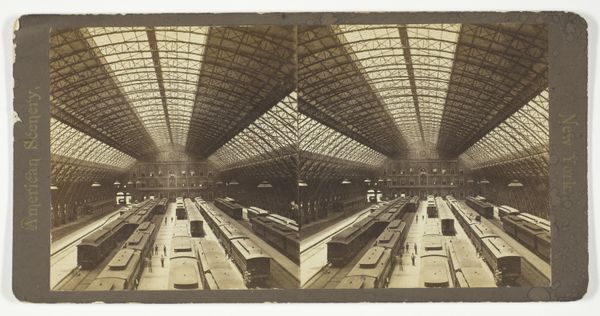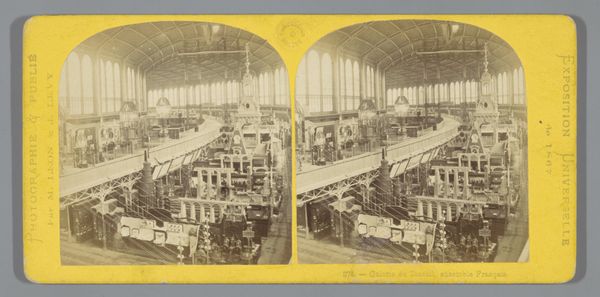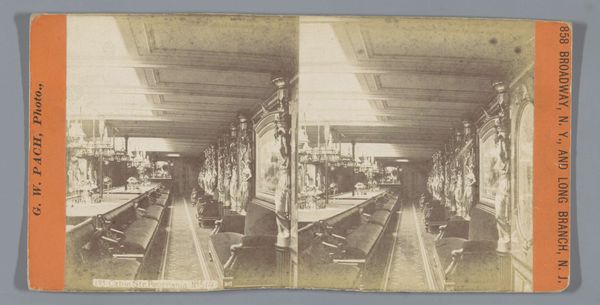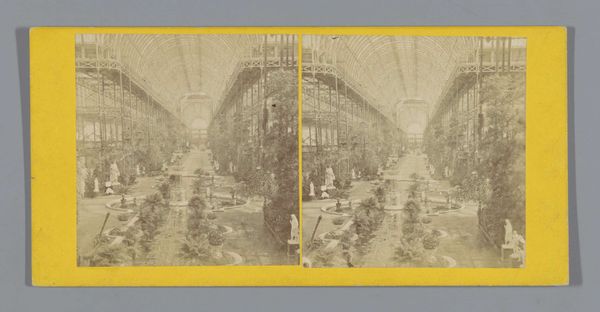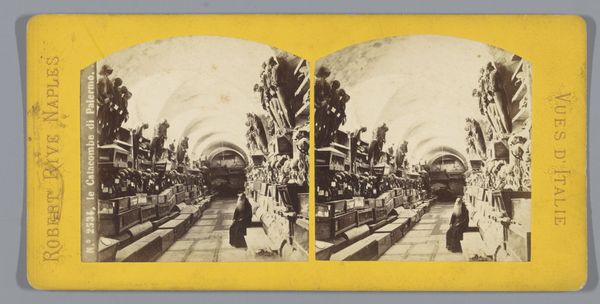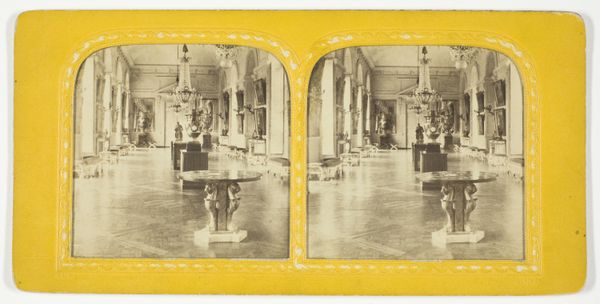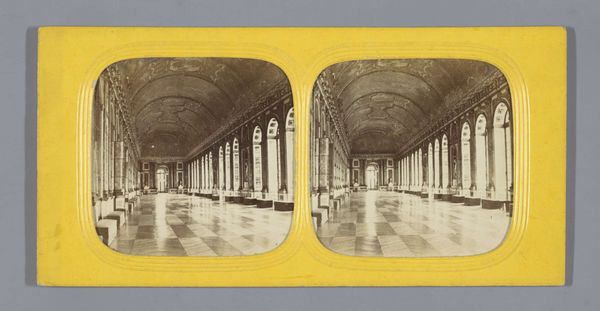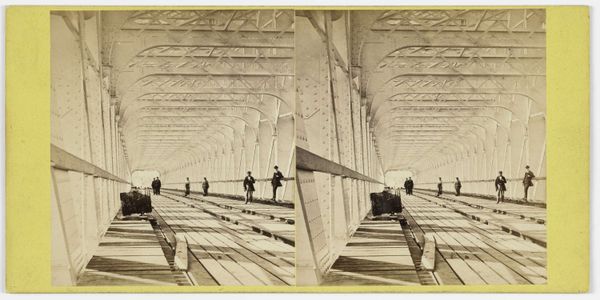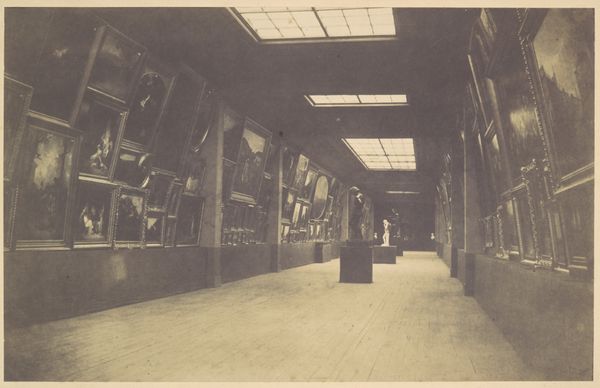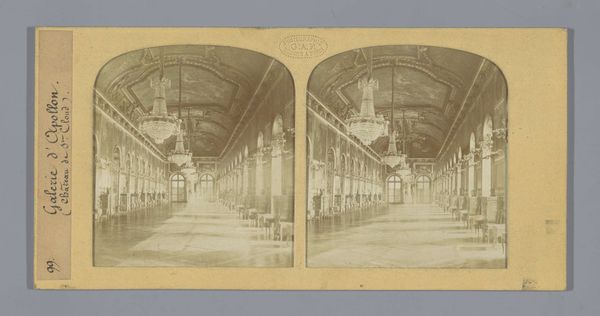
photography
#
16_19th-century
#
photography
#
cityscape
Dimensions: 8.7 × 8.5 cm (each image); 10 × 17.7 cm(card)
Copyright: Public Domain
Editor: So, here we have a 19th-century photograph, “Interior of Arcade, Providence, R.I.,” dating somewhere between 1875 and 1899, credited to an anonymous photographer and held at the Art Institute of Chicago. It strikes me as being really controlled and symmetrical, like a stage set for a bustling human drama. What catches your eye when you look at this? Curator: The overwhelming presence of perspective, carefully engineered, guides our eye into the heart of the marketplace. Before elevators, arcades allowed vertical retail within limited space. Note the repeating architectural elements -- the rhythm of arches and skylights. This photograph echoes classical ideals of order and progress. The bustling stalls of the arcade present as emblems of industriousness and enterprise, and promise societal prosperity. What story do these visual components tell, and why capture this commercial space in this format? Editor: Well, the symmetry and forced perspective could suggest a stable, well-organized society investing in itself. It feels propagandistic almost, showcasing commerce and structure. The anonymous attribution adds to the feeling it is representative rather than individual. Curator: Exactly! The lack of a named author reinforces its status as an idealization. This is not about personal vision; it's a constructed symbol of aspiration. Note how even the blurred figures add to the symbolism, representing general activity instead of specific individuals. The marketplace acts as a cultural microcosm reflecting societal values and the aspiration of continuous expansion. Are there any other layers to the picture? Editor: That's really insightful, especially regarding the people being blurred to stand as pure figures within a grand picture. I was viewing them too specifically rather than seeing their cultural role, as you've indicated. Thank you! Curator: And thank you; every interpretation builds on others! By contemplating what has lasted, we can truly learn from our cultural past.
Comments
No comments
Be the first to comment and join the conversation on the ultimate creative platform.
